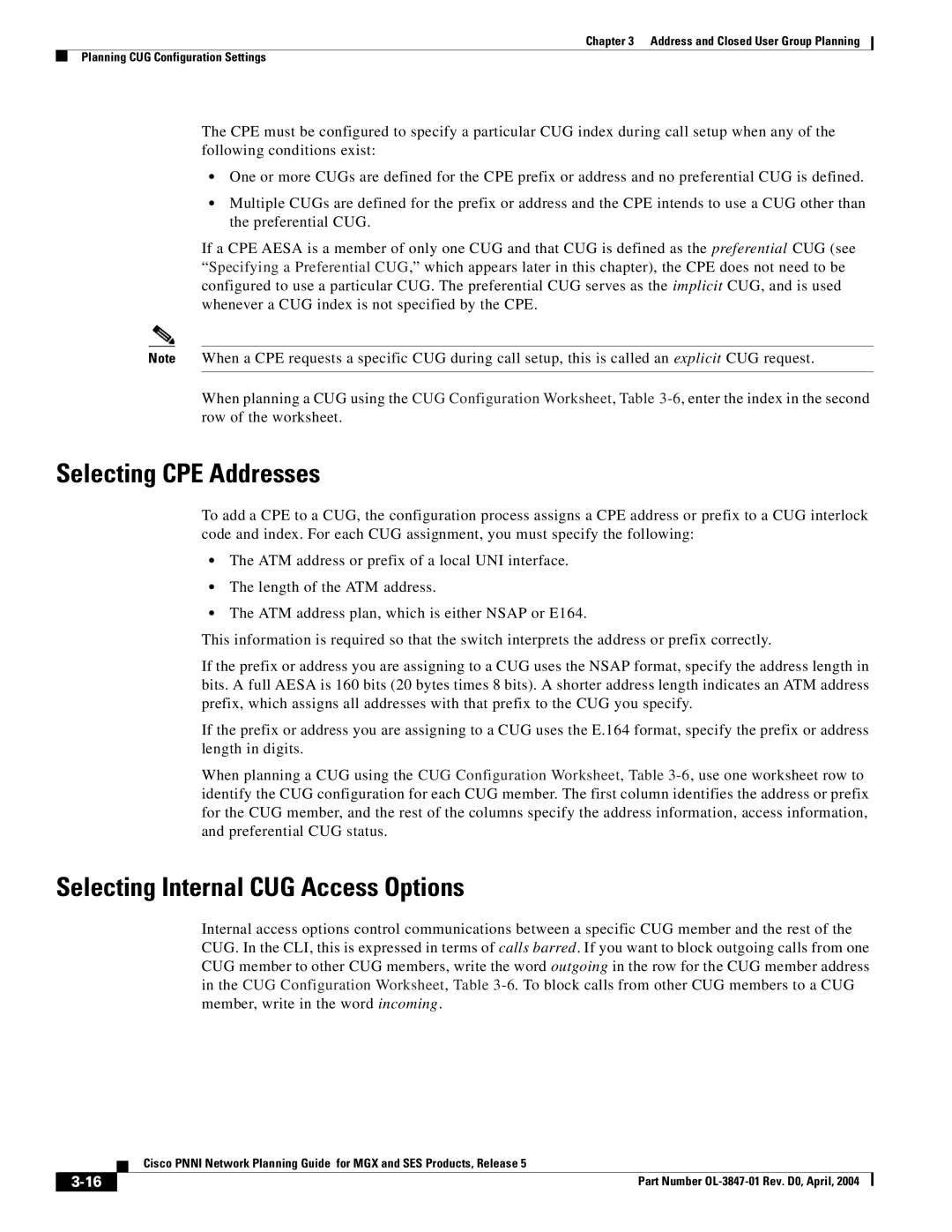
Chapter 3 Address and Closed User Group Planning
Planning CUG Configuration Settings
The CPE must be configured to specify a particular CUG index during call setup when any of the following conditions exist:
•One or more CUGs are defined for the CPE prefix or address and no preferential CUG is defined.
•Multiple CUGs are defined for the prefix or address and the CPE intends to use a CUG other than the preferential CUG.
If a CPE AESA is a member of only one CUG and that CUG is defined as the preferential CUG (see “Specifying a Preferential CUG,” which appears later in this chapter), the CPE does not need to be configured to use a particular CUG. The preferential CUG serves as the implicit CUG, and is used whenever a CUG index is not specified by the CPE.
Note When a CPE requests a specific CUG during call setup, this is called an explicit CUG request.
When planning a CUG using the CUG Configuration Worksheet, Table
Selecting CPE Addresses
To add a CPE to a CUG, the configuration process assigns a CPE address or prefix to a CUG interlock code and index. For each CUG assignment, you must specify the following:
•The ATM address or prefix of a local UNI interface.
•The length of the ATM address.
•The ATM address plan, which is either NSAP or E164.
This information is required so that the switch interprets the address or prefix correctly.
If the prefix or address you are assigning to a CUG uses the NSAP format, specify the address length in bits. A full AESA is 160 bits (20 bytes times 8 bits). A shorter address length indicates an ATM address prefix, which assigns all addresses with that prefix to the CUG you specify.
If the prefix or address you are assigning to a CUG uses the E.164 format, specify the prefix or address length in digits.
When planning a CUG using the CUG Configuration Worksheet, Table
Selecting Internal CUG Access Options
Internal access options control communications between a specific CUG member and the rest of the CUG. In the CLI, this is expressed in terms of calls barred. If you want to block outgoing calls from one CUG member to other CUG members, write the word outgoing in the row for the CUG member address in the CUG Configuration Worksheet, Table
| Cisco PNNI Network Planning Guide for MGX and SES Products, Release 5 |
Part Number |
